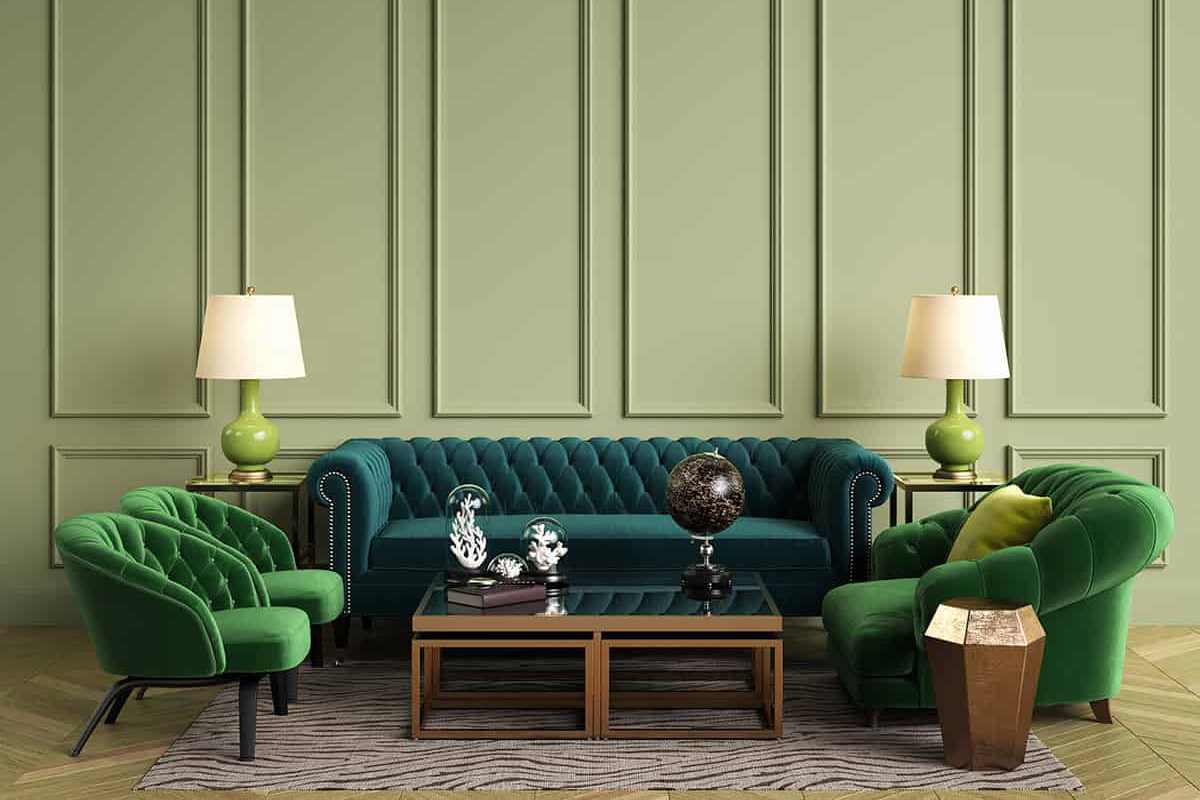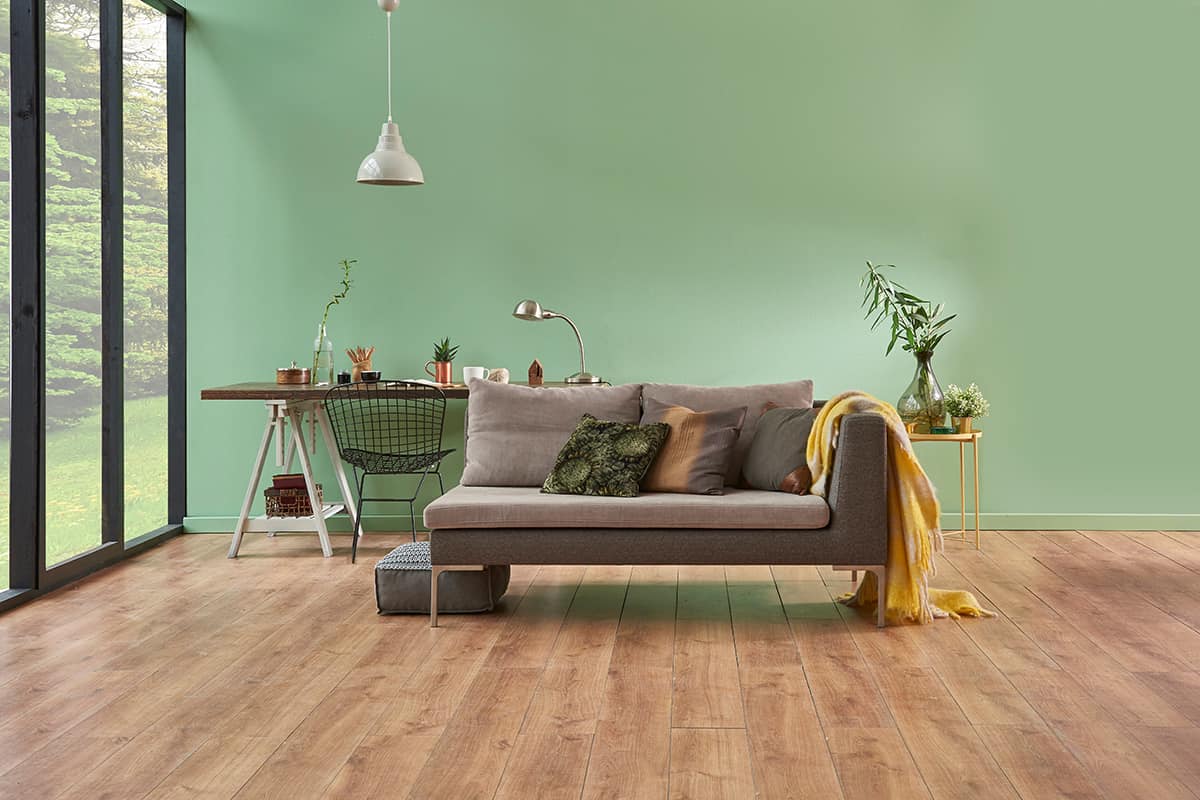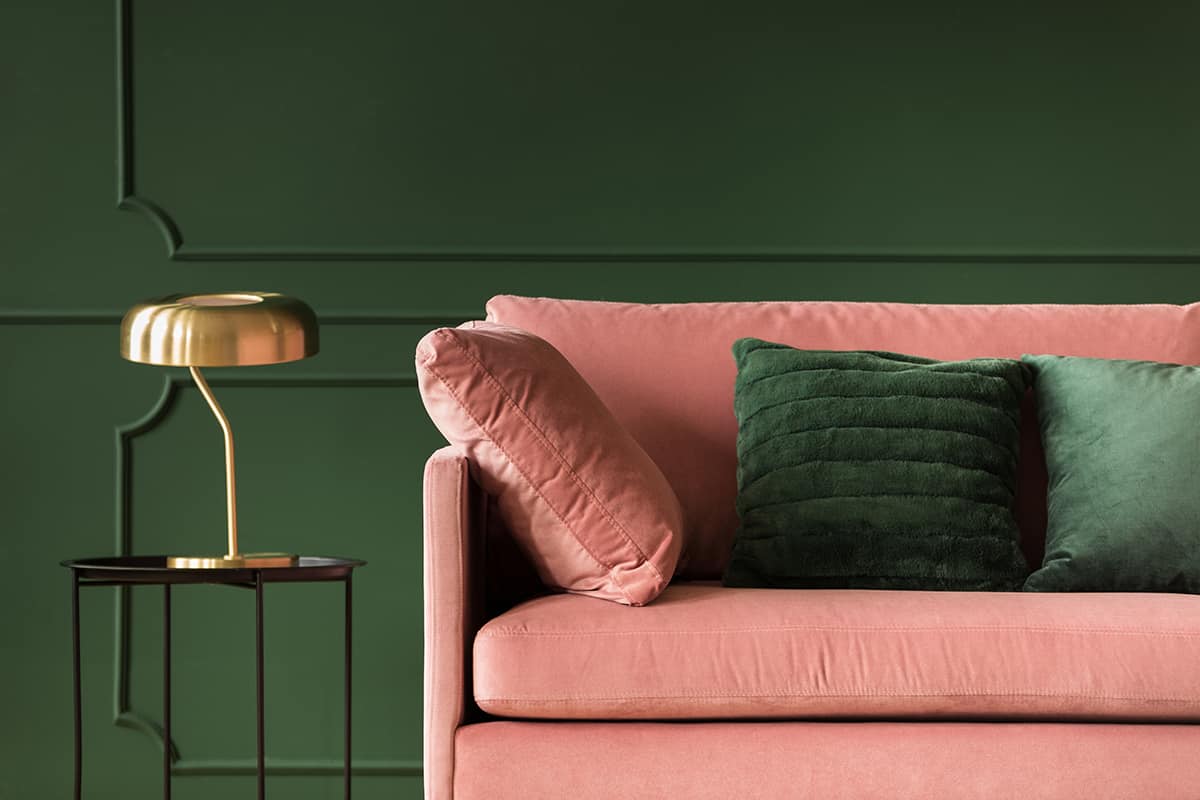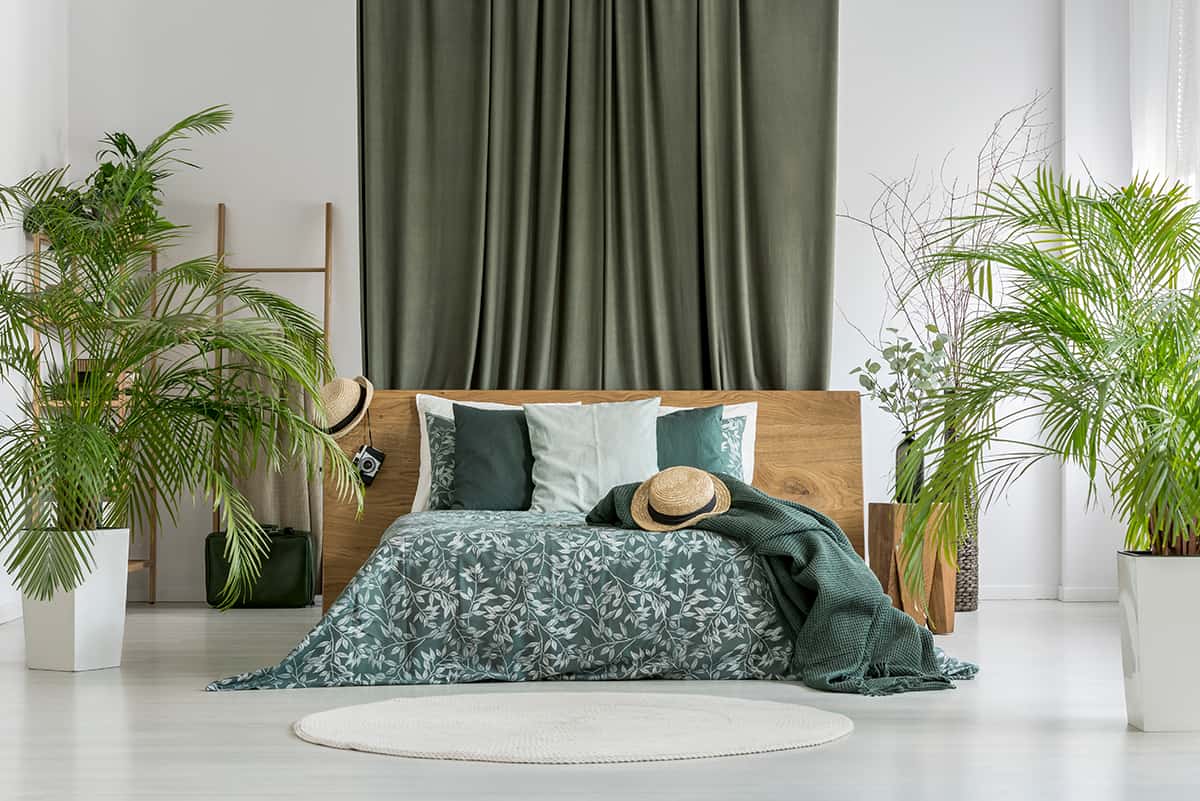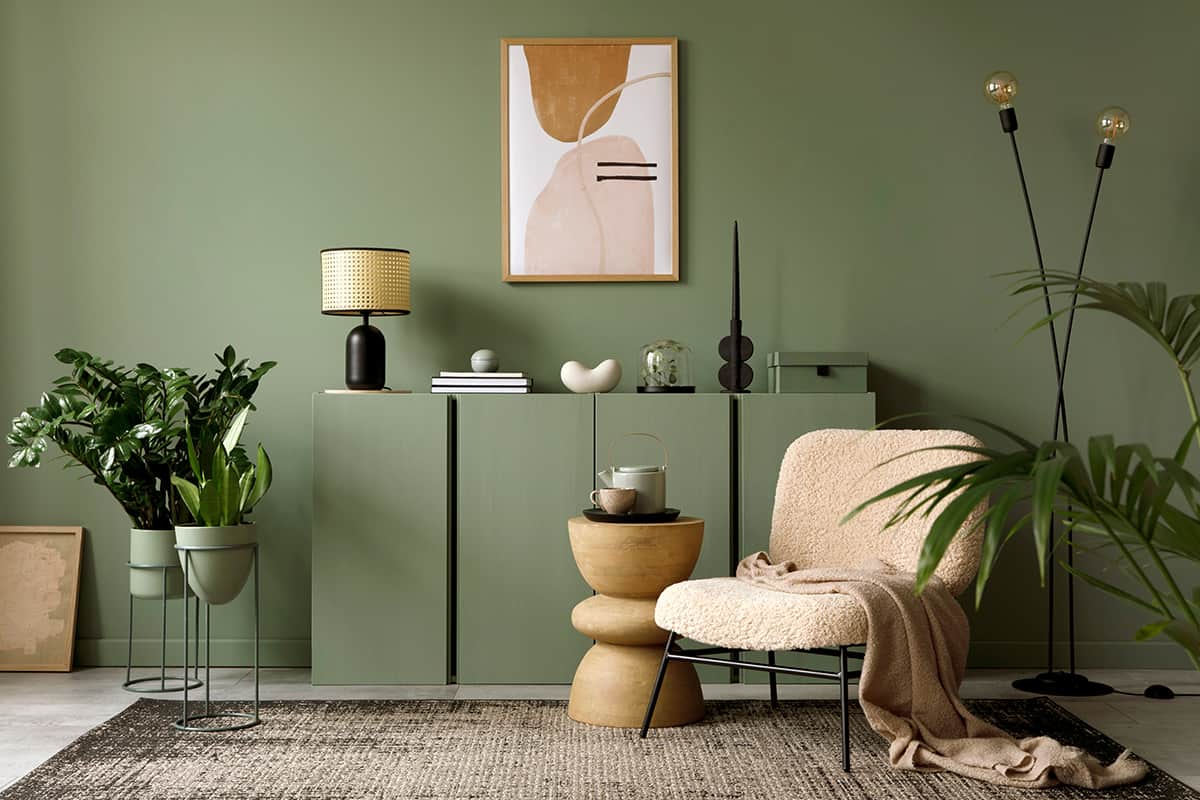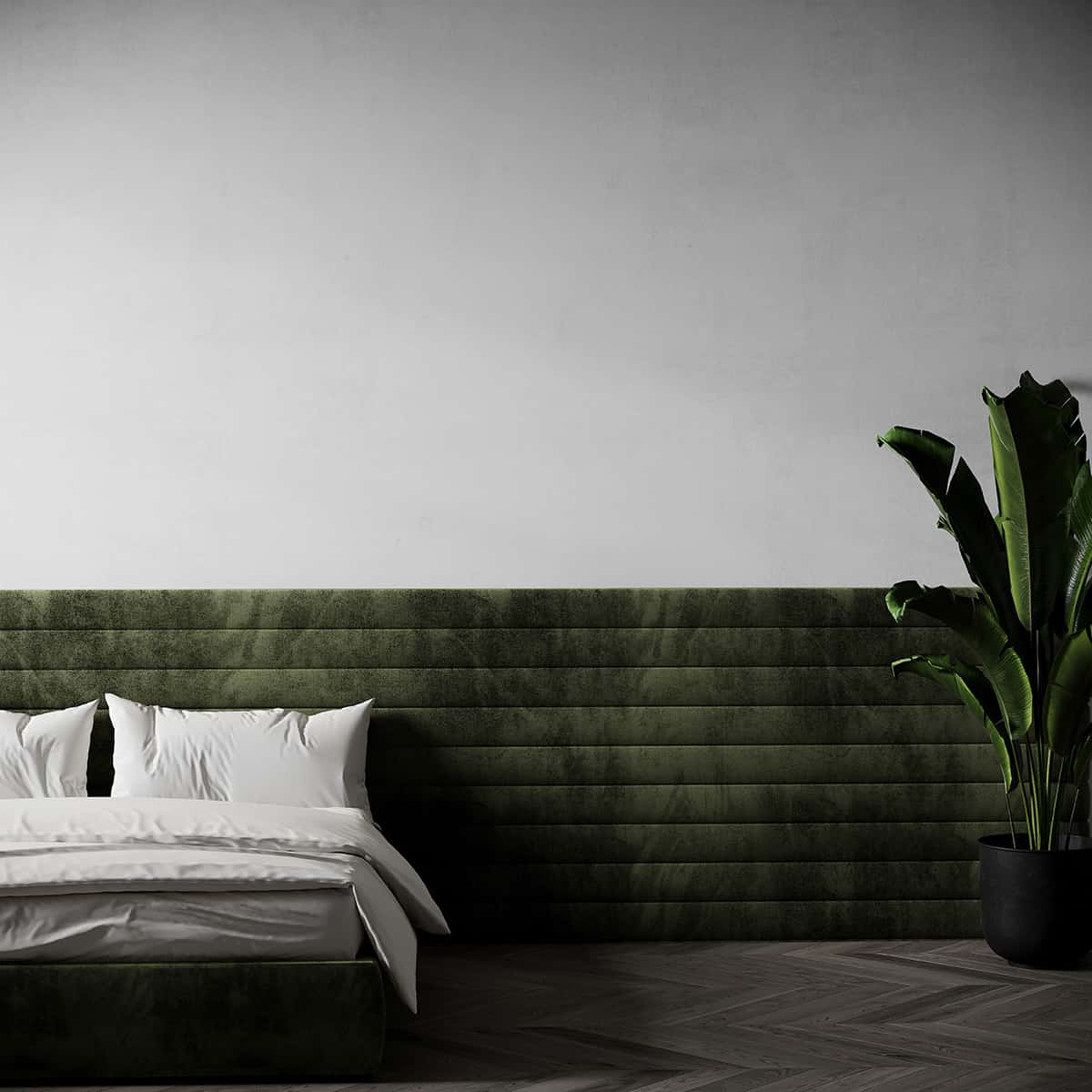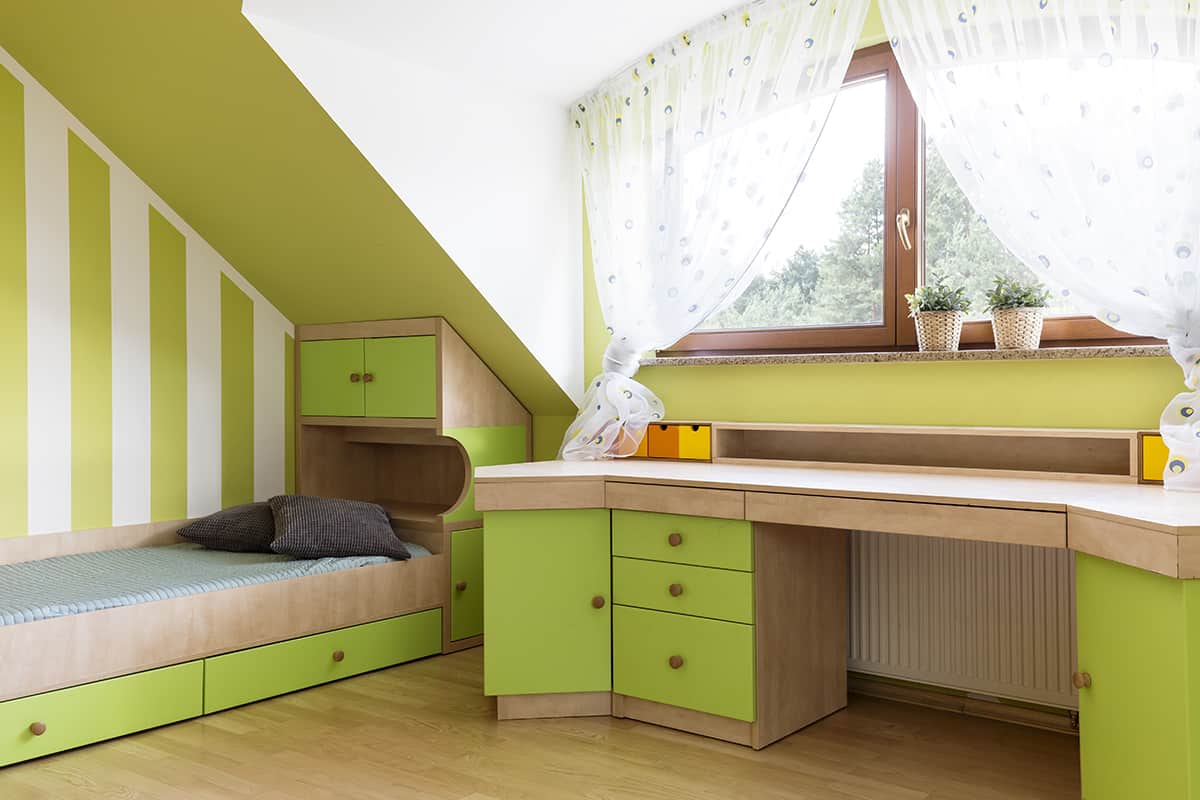Green is a really versatile color because it can read as a neutral in some color schemes, or it can work as a bold and impactful color to make more of a style statement. Green is most commonly a cool color, but some shades of green have elements of brown that give the color a warmer temperature and therefore change the atmosphere that it will create in a room.
There are such a wide variety of colors that work well with green, and these will be affected by exactly the shade of green you are using.
The contrasting and complementary colors for green are those which sit opposite it on the color wheel. The color directly facing green on the color wheel is red, so these two colors will contrast and make the other color seem more intense and vibrant.
The other contrasting colors for green are pink, purple, and orange, as these three colors all contain components of red. Other colors that work well with green are the analogous colors, which are the colors that sit alongside green on the color wheel. These colors are blue and yellow, and they will create a sense of harmony when used with green, as they have similar tones.
Green also works well with neutral shades, especially those found in nature, because green is also a prominent color in nature.
Various shades of green and brown look earthy and attractive together, as we are used to seeing these colors working together outdoors, for example, the brown bark of a tree next to the green foliage. Green and beige also work well together for the same reason.
Colors that Go with Mint Green
Mint green is a pastel shade of green that looks more like mint ice cream rather than the fresh mint leaves on the herb plant of the same name. Mint green has a refreshing and invigorating feel that can be put to good use in a bathroom or kitchen where you want to create an atmosphere that feels fresh and clean.
Use this color in art deco-style decor with a dusky pink color or in a seaside-themed space with pastel blue and vanilla yellow. Mint green works well with any other color that you would consider to be an ice cream shade, such as the pink color of strawberry ice cream, the light brown color of chocolate ice cream, and the soft yellow of vanilla ice cream.
Mint green will also look striking next to gray, which will add a modern twist to decor in this shade and make the refreshing effect even more intense. Use mint green accessories in elegant or luxury decor, such as a white bedroom with black furniture and mint green cushions, with a mint green rug.
Colors that Go with Emerald Green
Emerald green is big news in the interior design world, representing a style of decor that is glamorous and luxurious while also being linked to nature.
This is a jewel tone that works really well with other highly saturated jewel colors such as sapphire blue, amethyst purple, and citrine yellow; however, it can also be used effectively with more natural colors such as twine tan and gray.
Emerald green seems to be a color that was made for velvet fabric, as it offers a deep, elegant, and beautiful look with this texture. Opt for an emerald green velvet sofa with amethyst purple cushions or emerald green velvet curtains set against navy blue walls.
Pastel colors will add a more romantic look to an emerald green decor, such as pastel pink cushions on an emerald green bedspread or pastel lilac curtains against an emerald green wall.
Colors that Go with Olive Green
Olive green is a perfect color to use if you want a color that feels interesting but also works as a neutral. Olive green is a muted and earthy tone of green that is commonly seen in nature, and this is why we read it as a neutral in most settings.
Opt for olive green walls to link your room to your outdoor space, and add further natural textures and details into the space to highlight this, such as houseplants, woven storage baskets, and jute rugs. You can use olive green with a warm or cool color palette.
In a room with olive green walls, opt for a navy blue sofa with medium gray cushions and gray curtains and olive green plant pots to achieve a contemporary, muted natural style. For a more cozy and inviting space, choose a tan-colored sofa set against olive green walls, with beige cushions and a beige rug.
Olive green can also look soothing in a black and white interior design. For example, paint walls in white, choose an olive green sofa, with black cushions and black painted trim. This will create a look that is stylish yet subtle, with a sense of earthy elegance.
Colors that Go with Sage Green
Sage green is a muted green shade with undertones of gray. It offers calming and soothing energy that can read as a neutral due to how muted and earthy it is.
This color is best paired with other muted shades, such as dusky pink, lilacs with gray tones, and various shades of beige. Sage green is a color that is popularly used in farmhouse-style decor or country cottage-themed spaces. It is named after the herb of the same name, which has gray-green heavily scented foliage.
In a bedroom with sage green walls, choose dusky pink bed sheets with gray cushions and a gray carpet. These colors look great in a kitchen where you want to achieve a fresh yet homely feel. Paint the walls in cream and opt for sage green cabinet doors, with a lilac bouquet displayed on the countertop, along with some lilac and sage green candles.
Colors that Go with Seaweed Green
Seaweed green is a dark shade of green with very subtle brown undertones. Use this color as the dominant shade in a bathroom by painting the walls in seaweed green and contrasting this against sandy beige tiles for a decor theme that is bold yet has a natural feel.
Seaweed green is such a dark shade that many people might be afraid to use it, but actually, the darkness of this color is what makes it so versatile for use in so many spaces.
In a small room, seaweed green will achieve a sense of depth that makes the walls feel as though they are receding to create the illusion of more space, while in a large room, seaweed green can make a space feel more cozy and intimate.
Pair seaweed green walls with pure white trim for a contrast that will frame the walls and make them stand out, and add pretty pastel shades to the space such as blush pink or apricot accessories to lighten the feel of the space.
You can also use seaweed green accessories instead of painting the walls in this color to include it in a room. Seaweed green accessories will look stunning in an aqua blue space or provide a dark contrast in a neutral and natural themed space with beige walls and tan sofas.
Colors that Go with Lime Green
Lime green is an underused color in interior design since it became excessively popular in the 1990s and left a lingering reputation behind it for being a loud and offensive color. However, if you use lime green in the right way, it can add a really fun and refreshing feel to a room.
In a kitchen or bedroom, paint the walls white and use lime green and royal blue accents, such as a white bedspread with a lime green and blue print on it or a lime green and blue striped rug.
This color scheme will feel relaxing yet revitalizing and can be used in botanical themes, farmhouse themes, traditional themes, and even coastal themes. Lime green can also be paired with pastel shades for a quirky and cute look.
Try apricot-colored walls with white bedsheets and lime green cushions or pale gray tiles in a bathroom with peach walls and lime green towels. The key to using lime green in an elegant way is not going overboard with it and always using at least one neutral shade in the color scheme.
In most scenarios, lime green as the dominant color for walls is going to be overstimulating unless you use lime green paint for just one accent wall. Instead, choose lime green as your accent color, along with a minimum of one neutral shade.
Incorporating a neutral color in a lime green color scheme ensures that the lime shade doesn’t overwhelm the space, and it will help to break up the colors and provide some balance. For example, use lime green and pastel pink accents in a white room or lime green and navy accents in a pale gray room.
